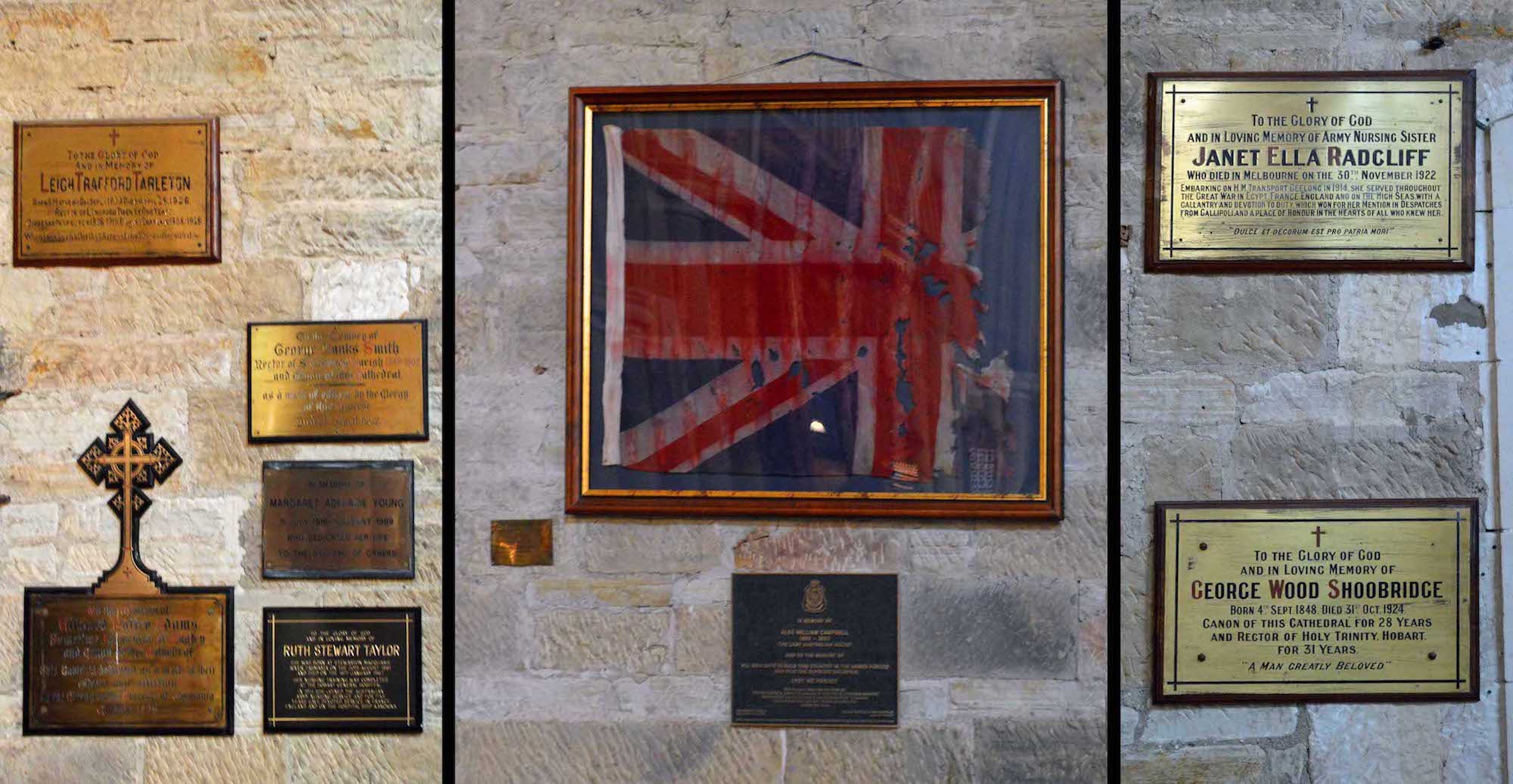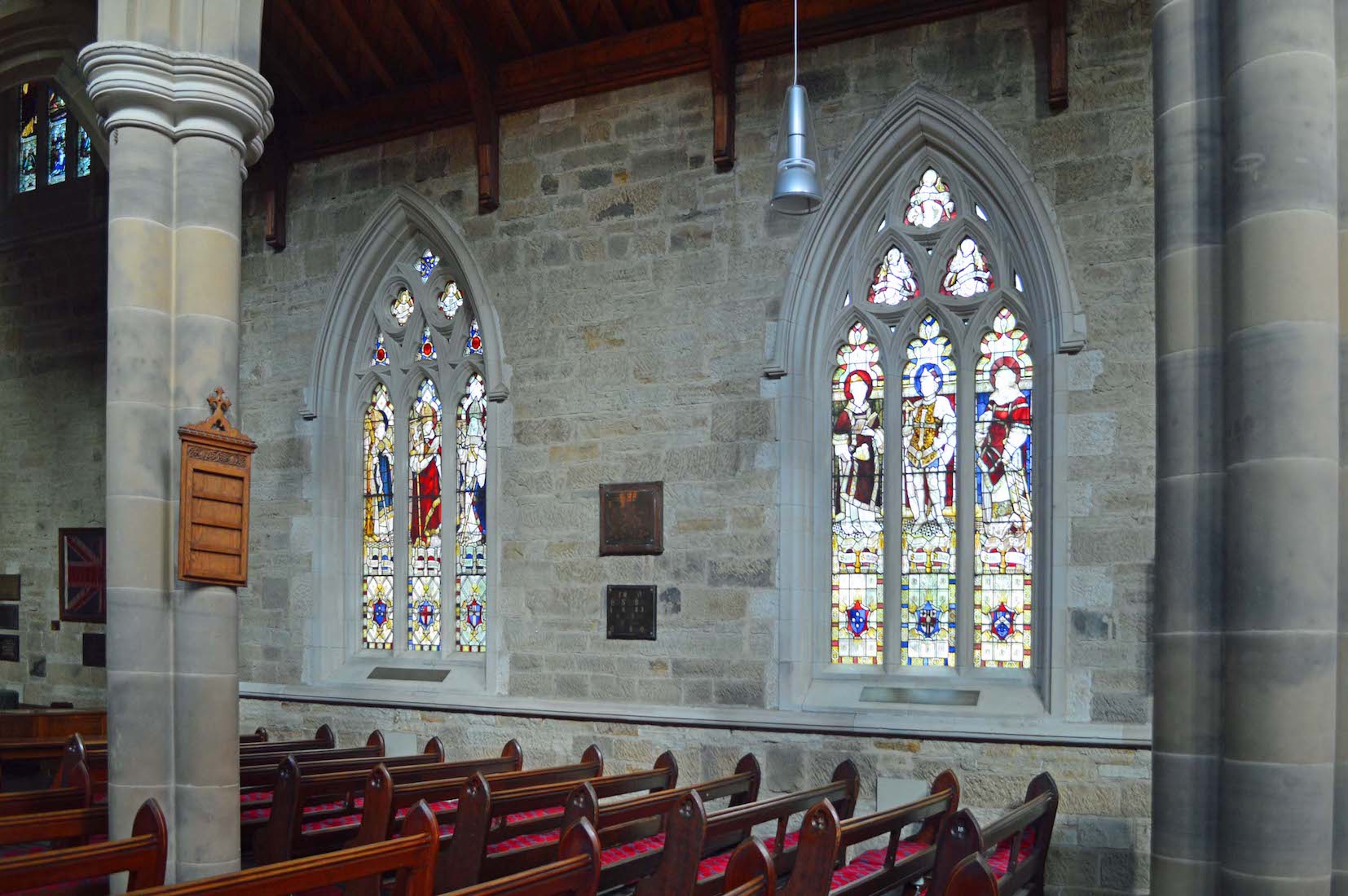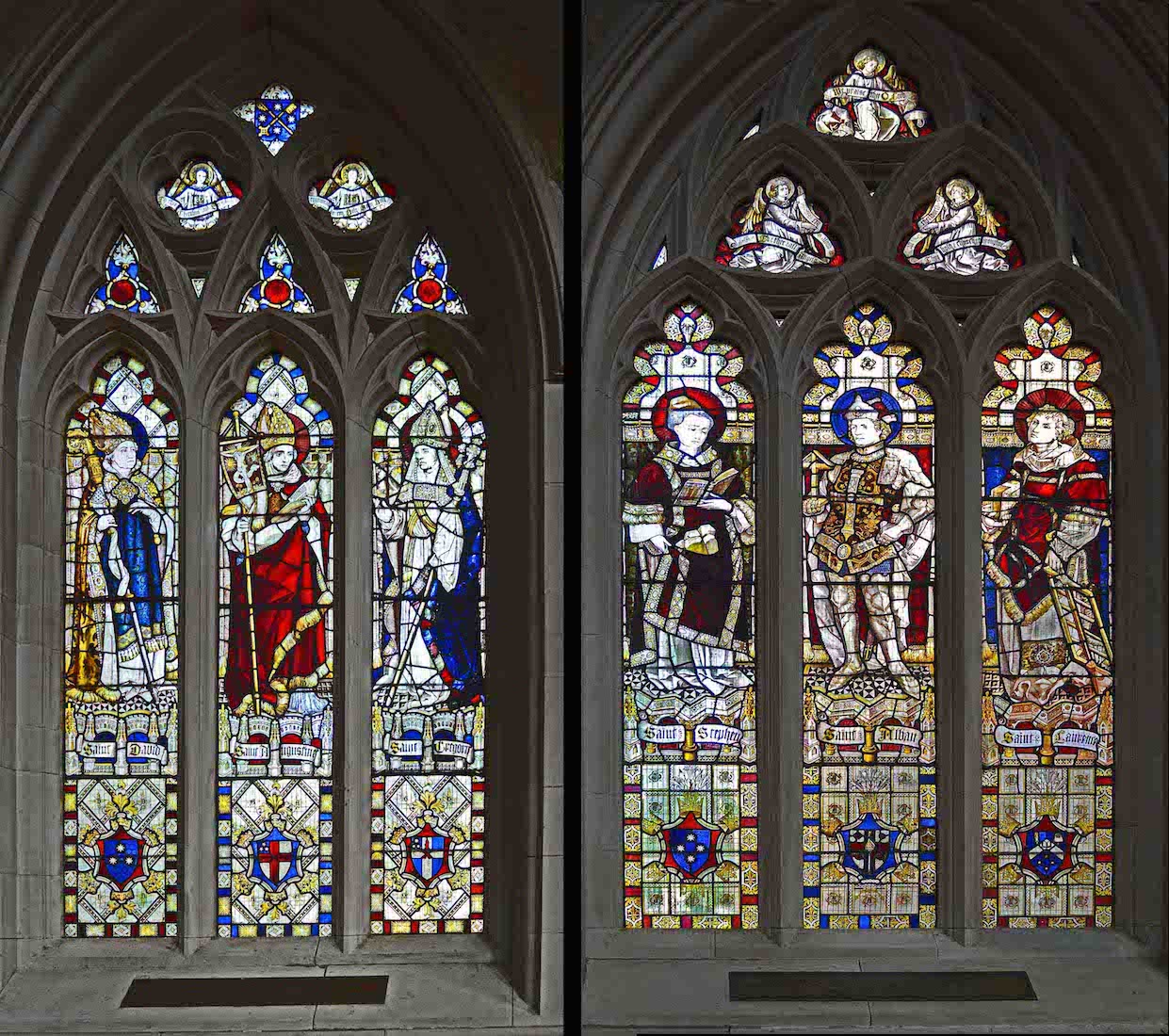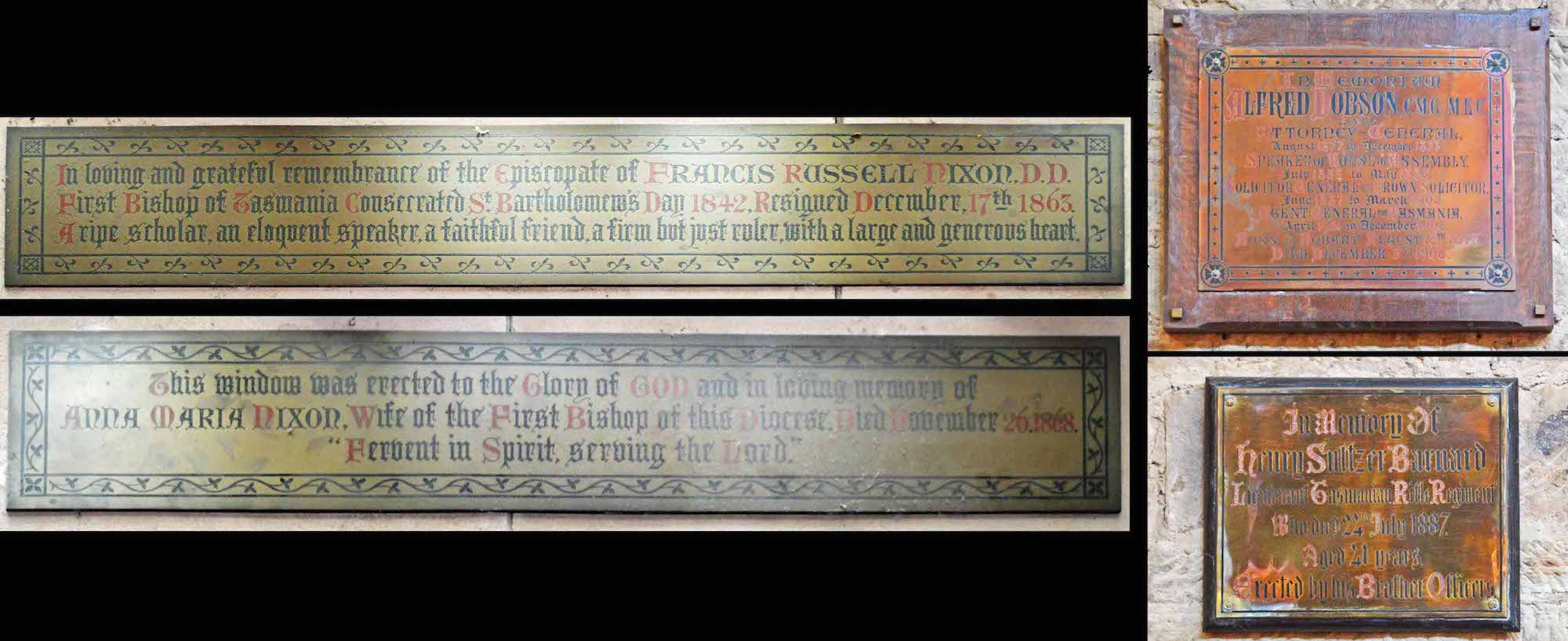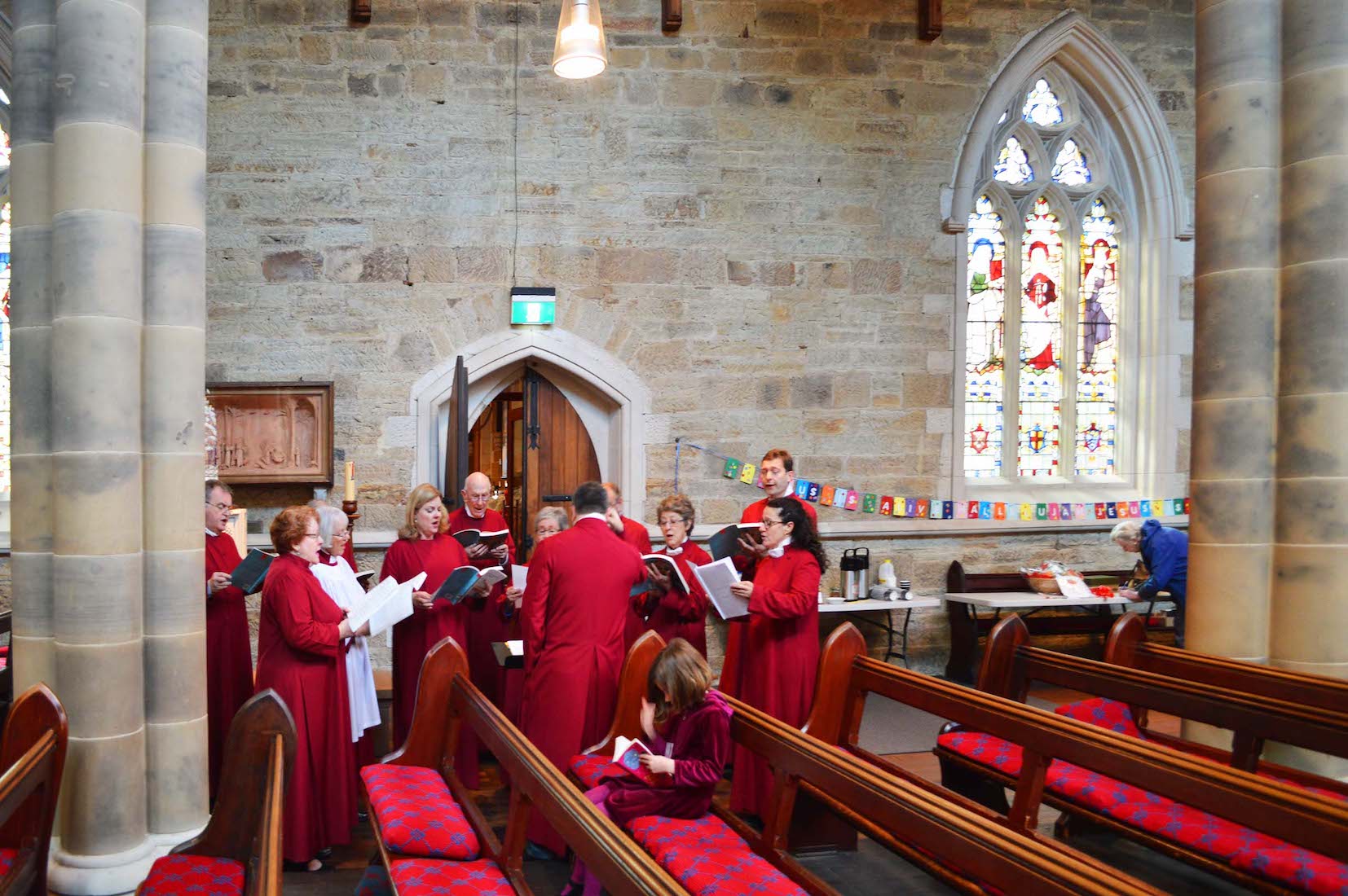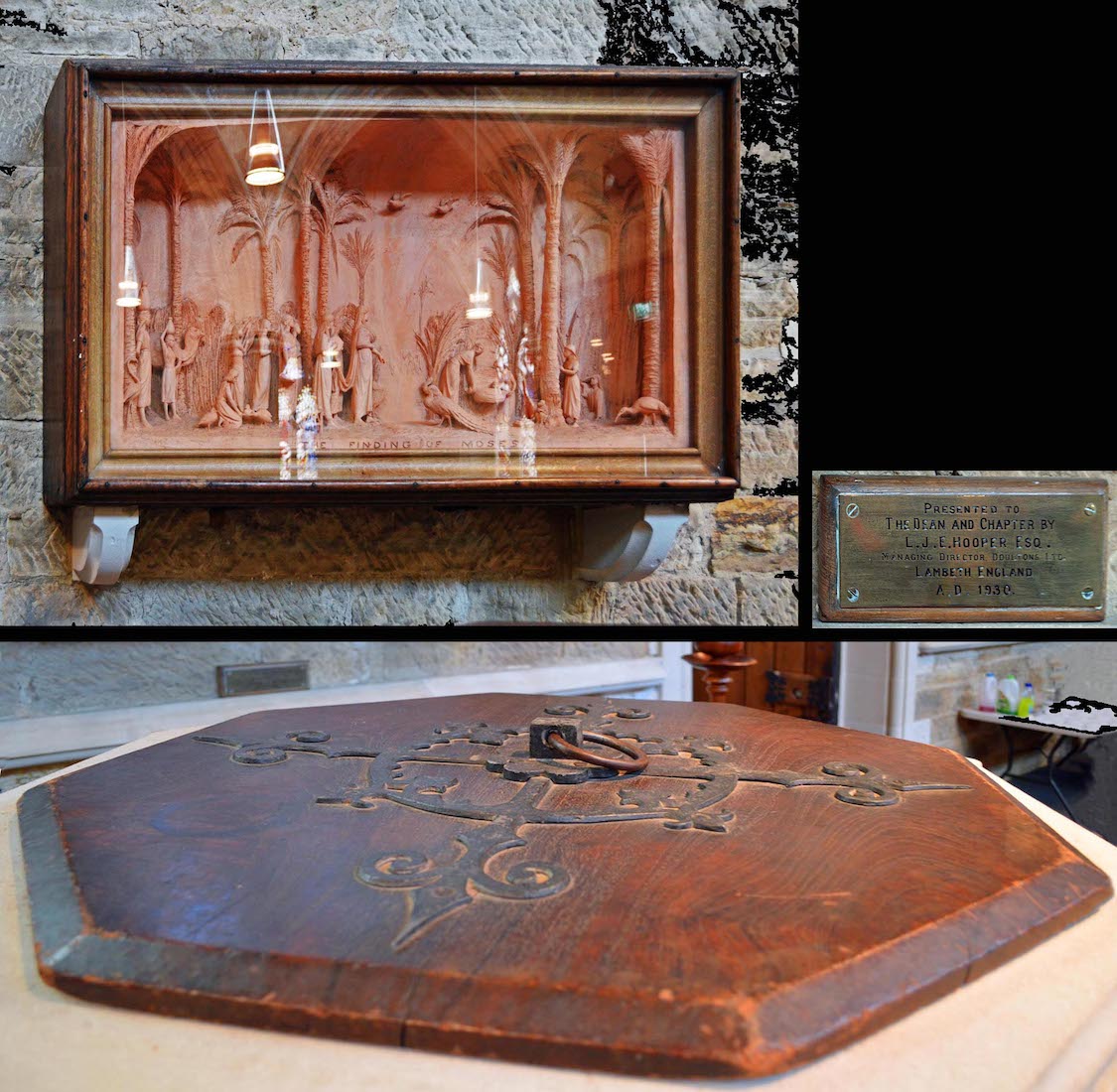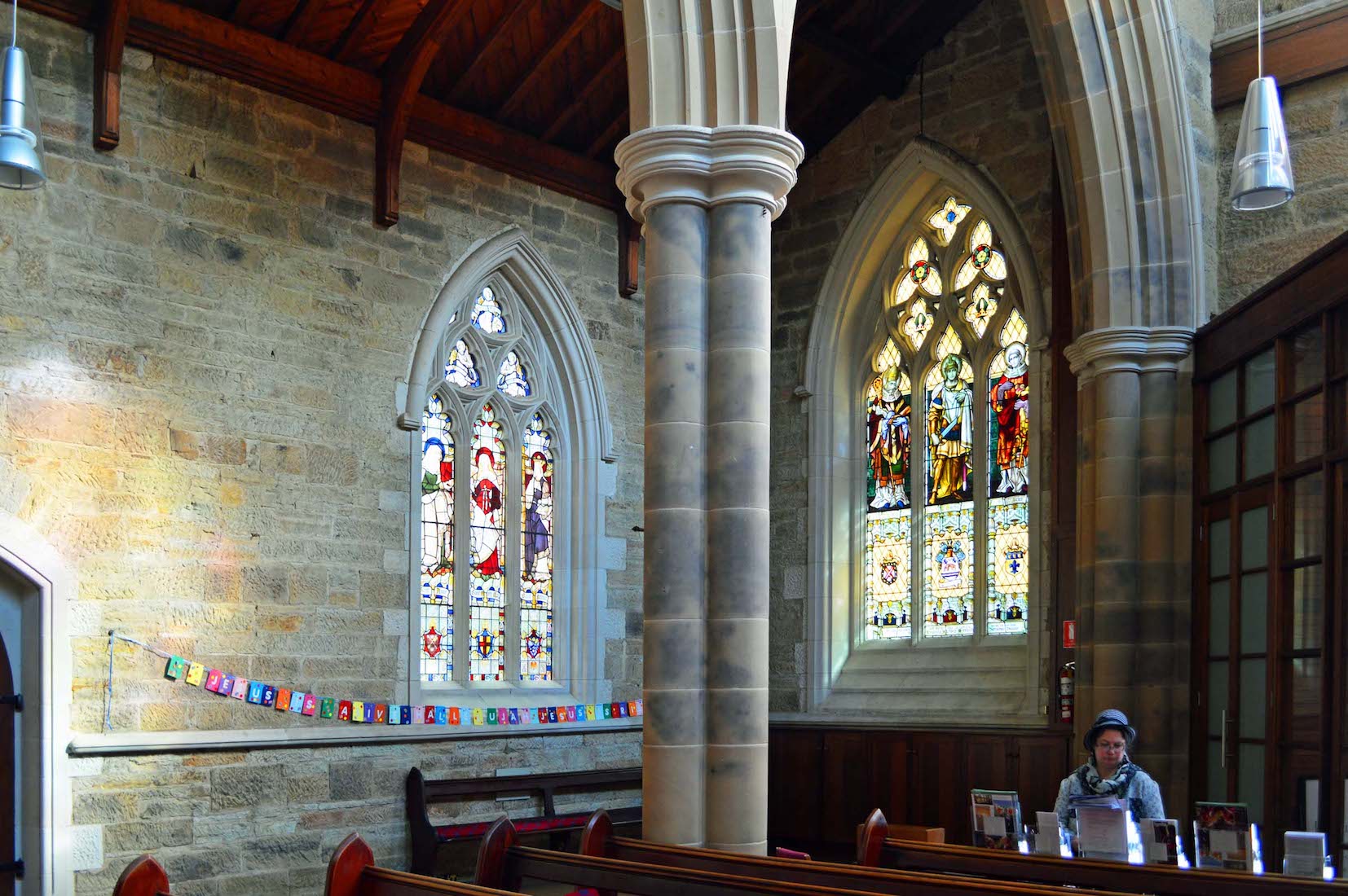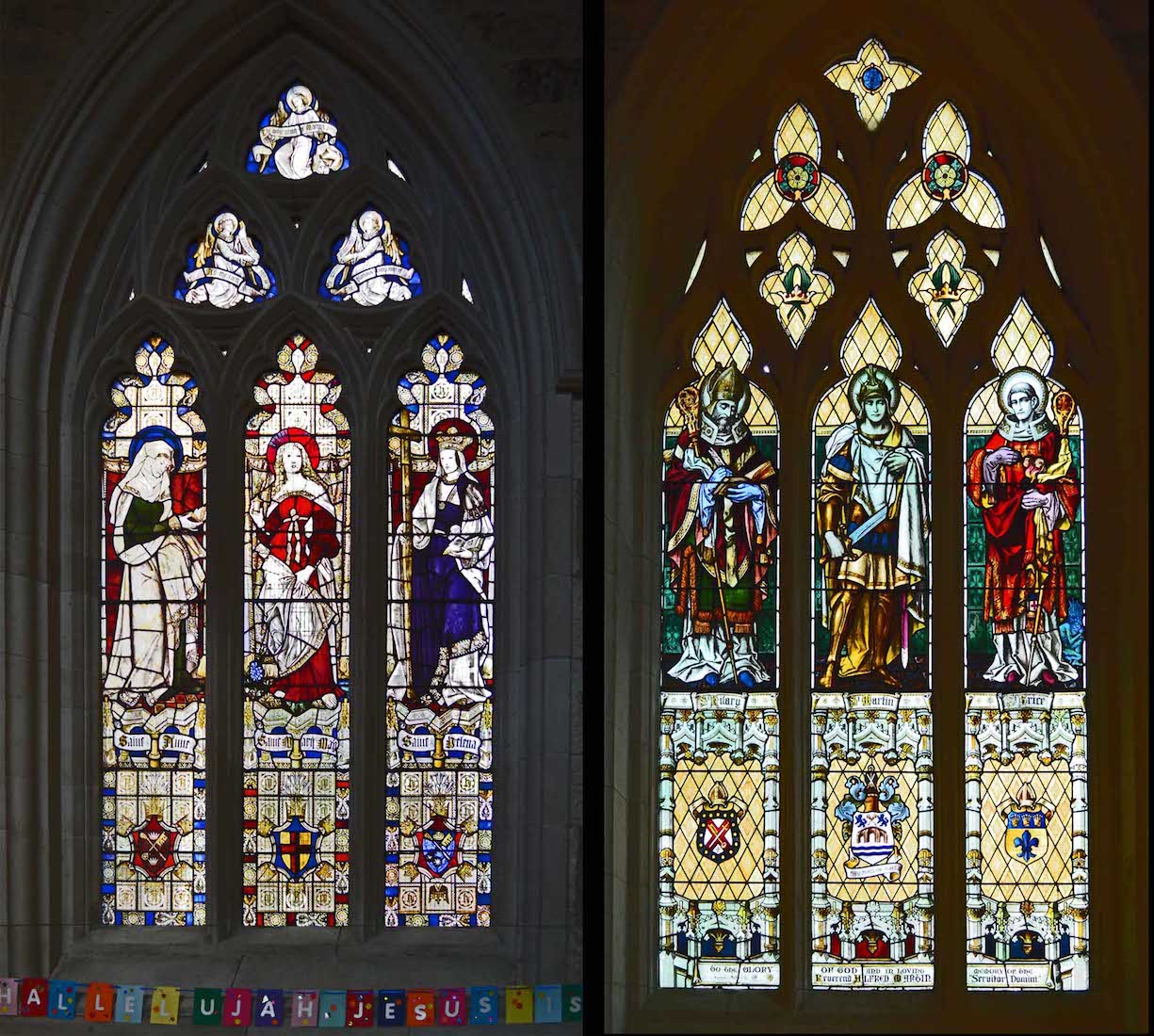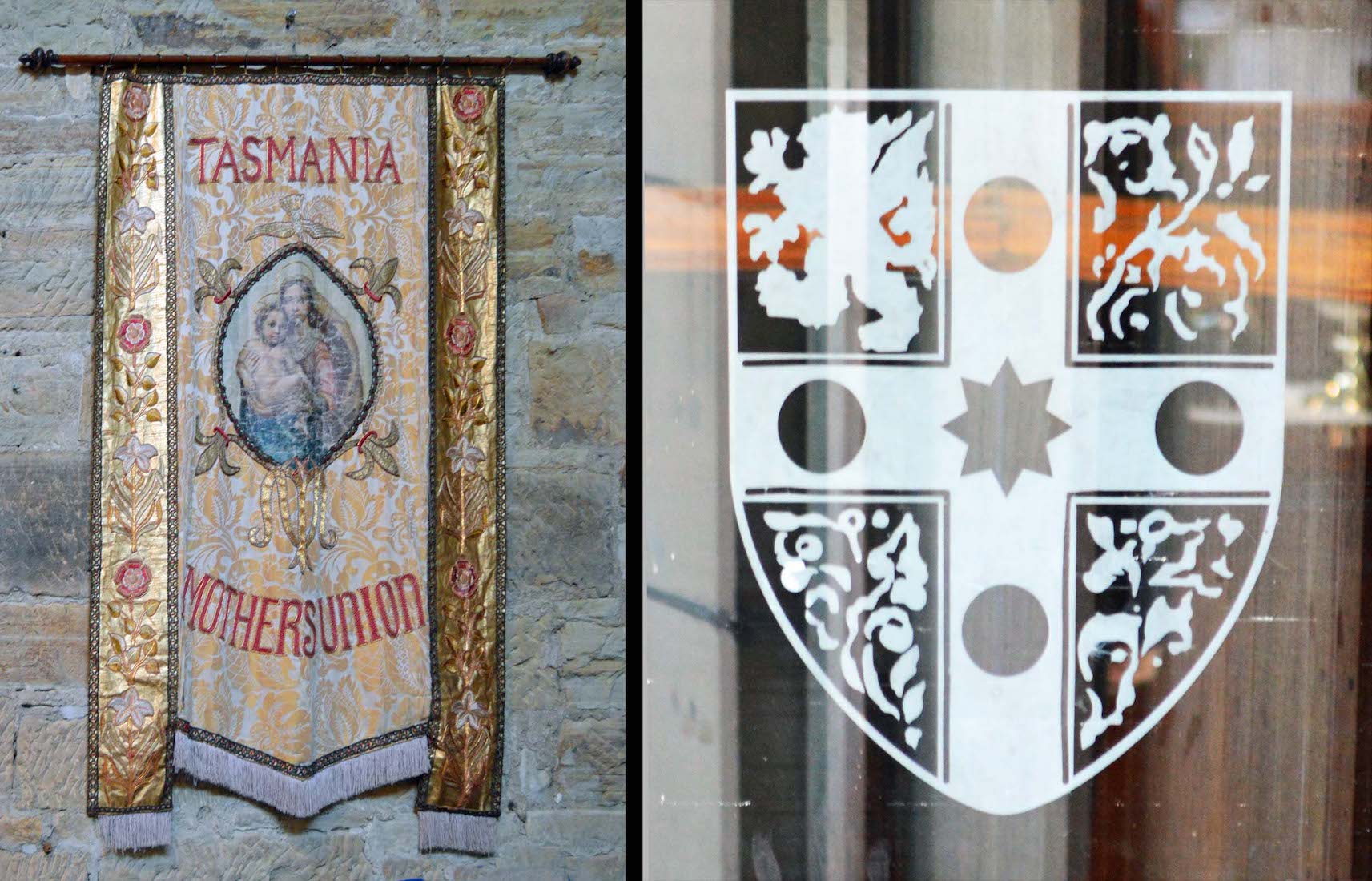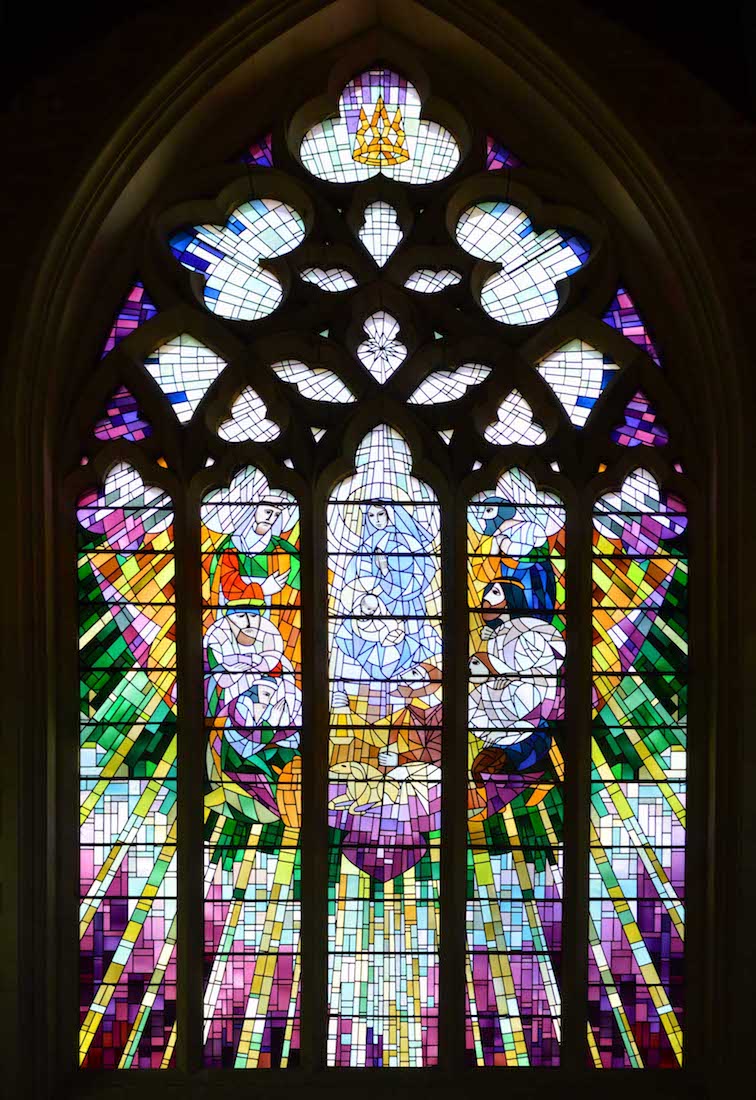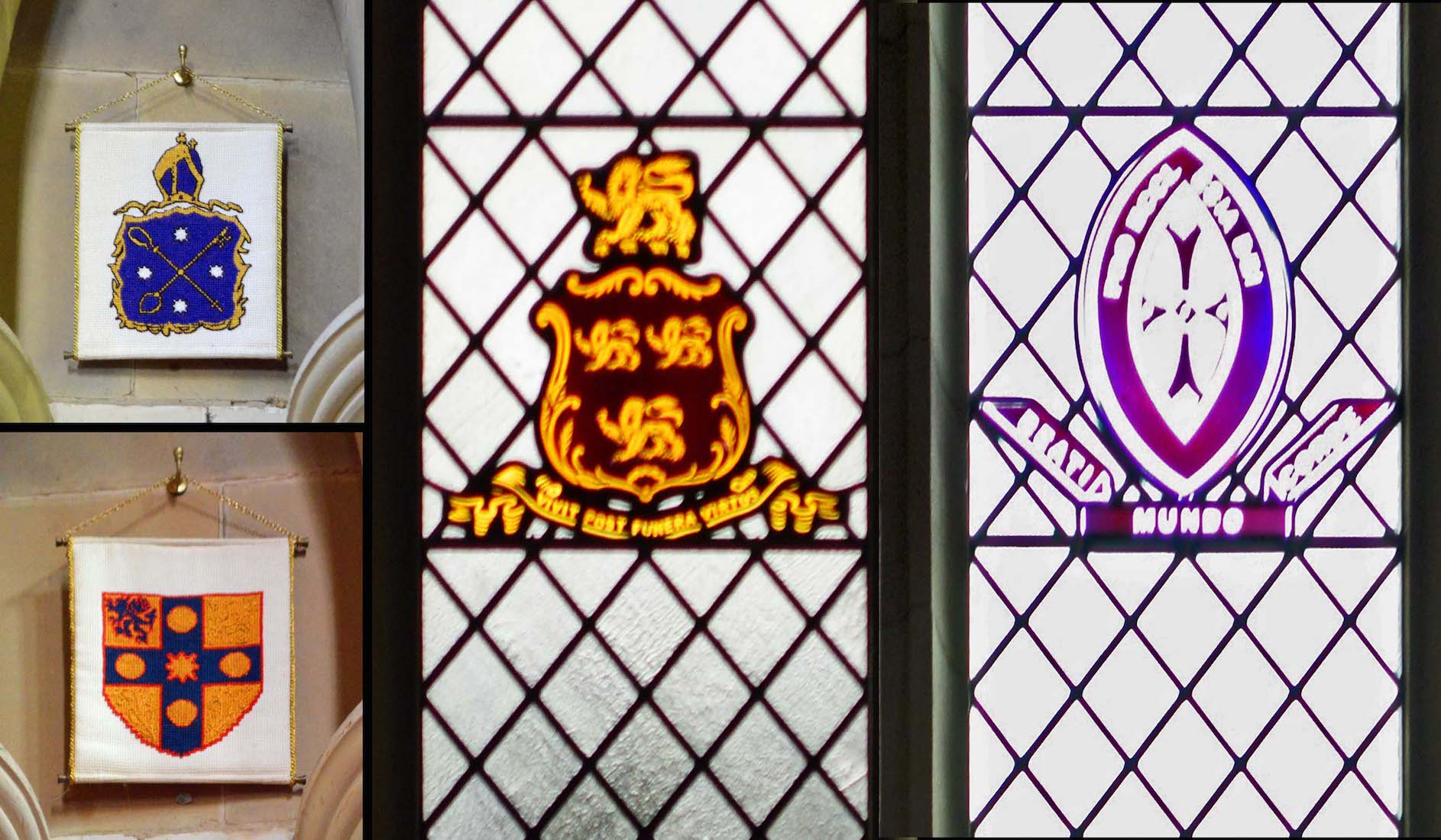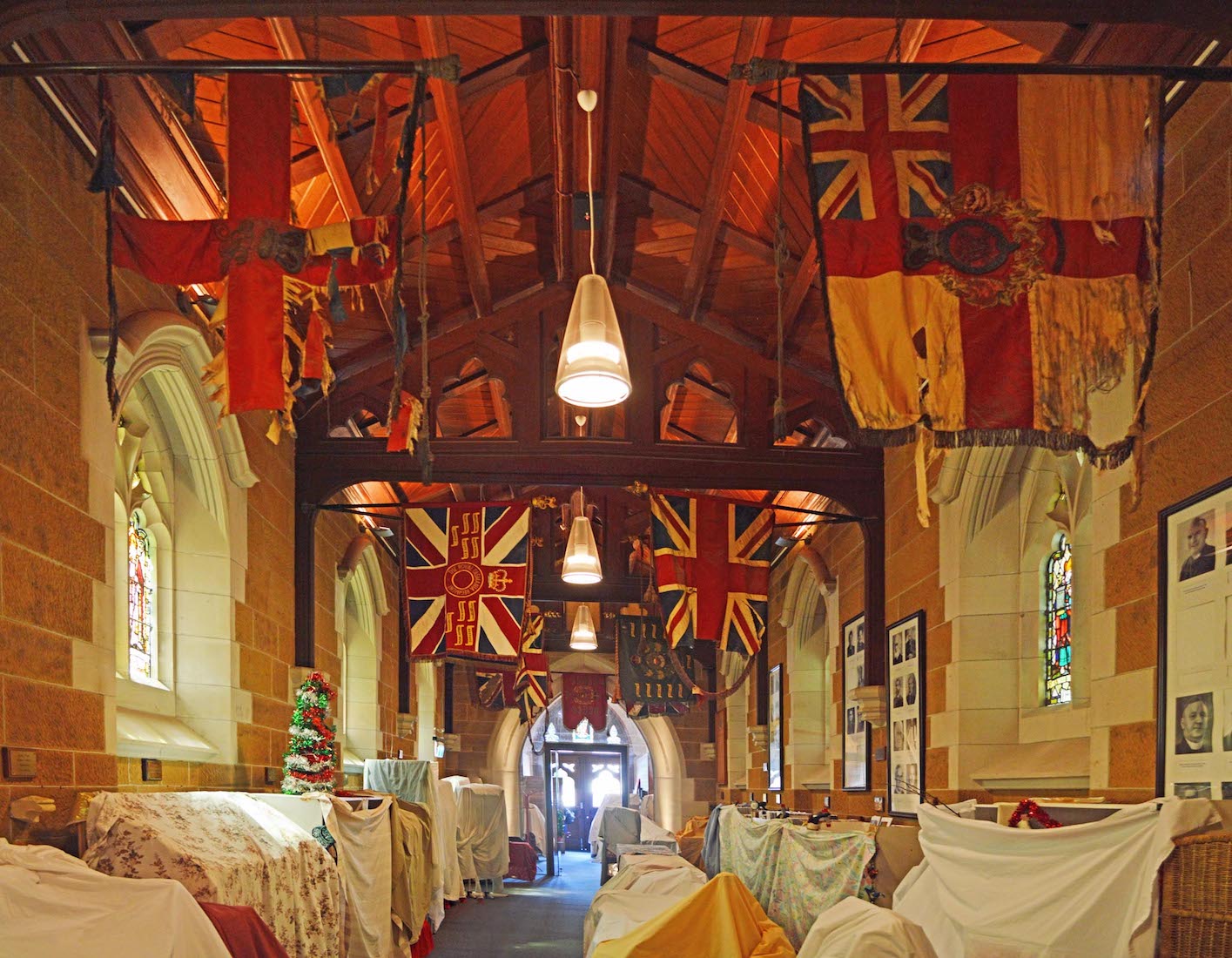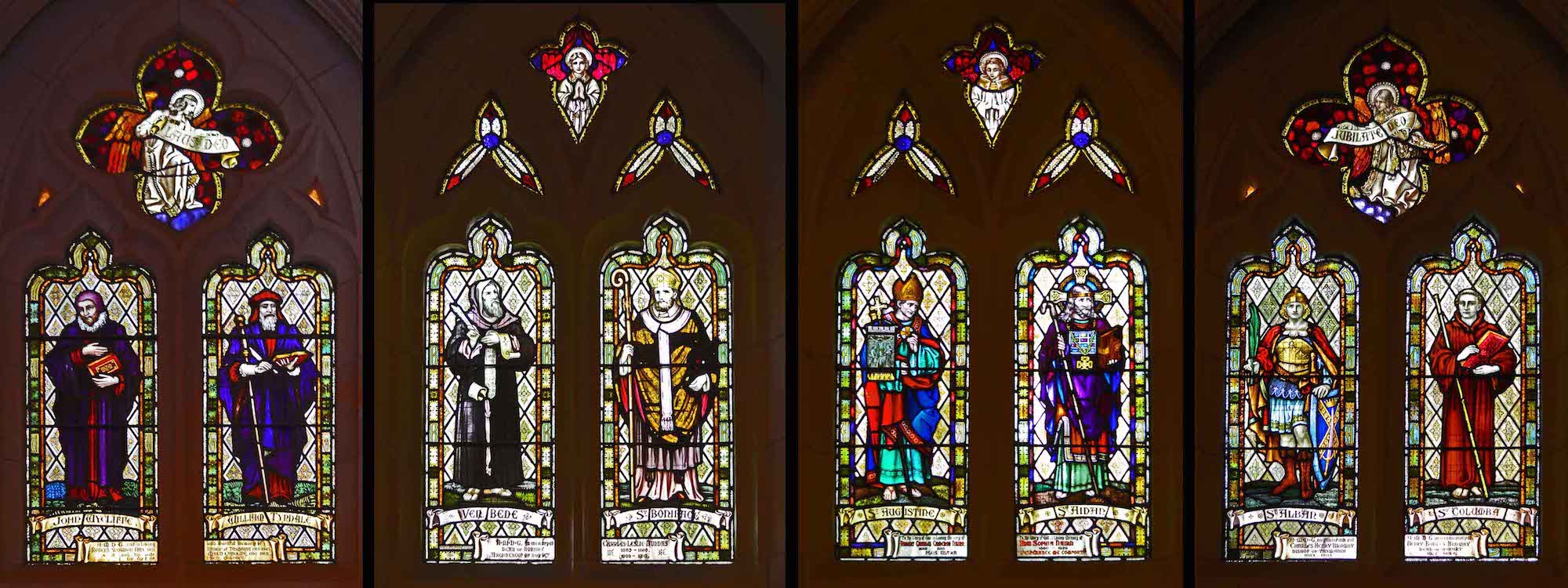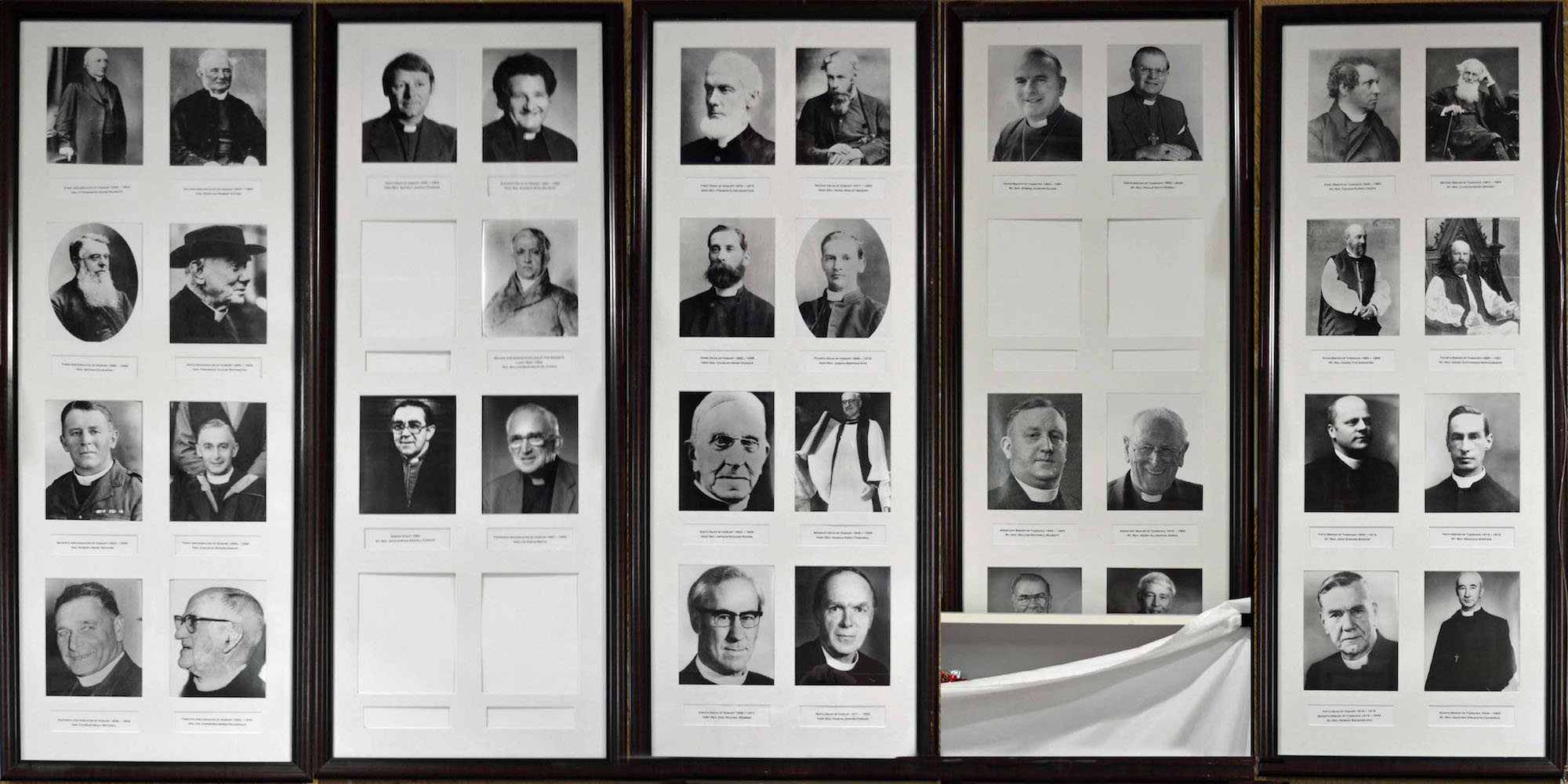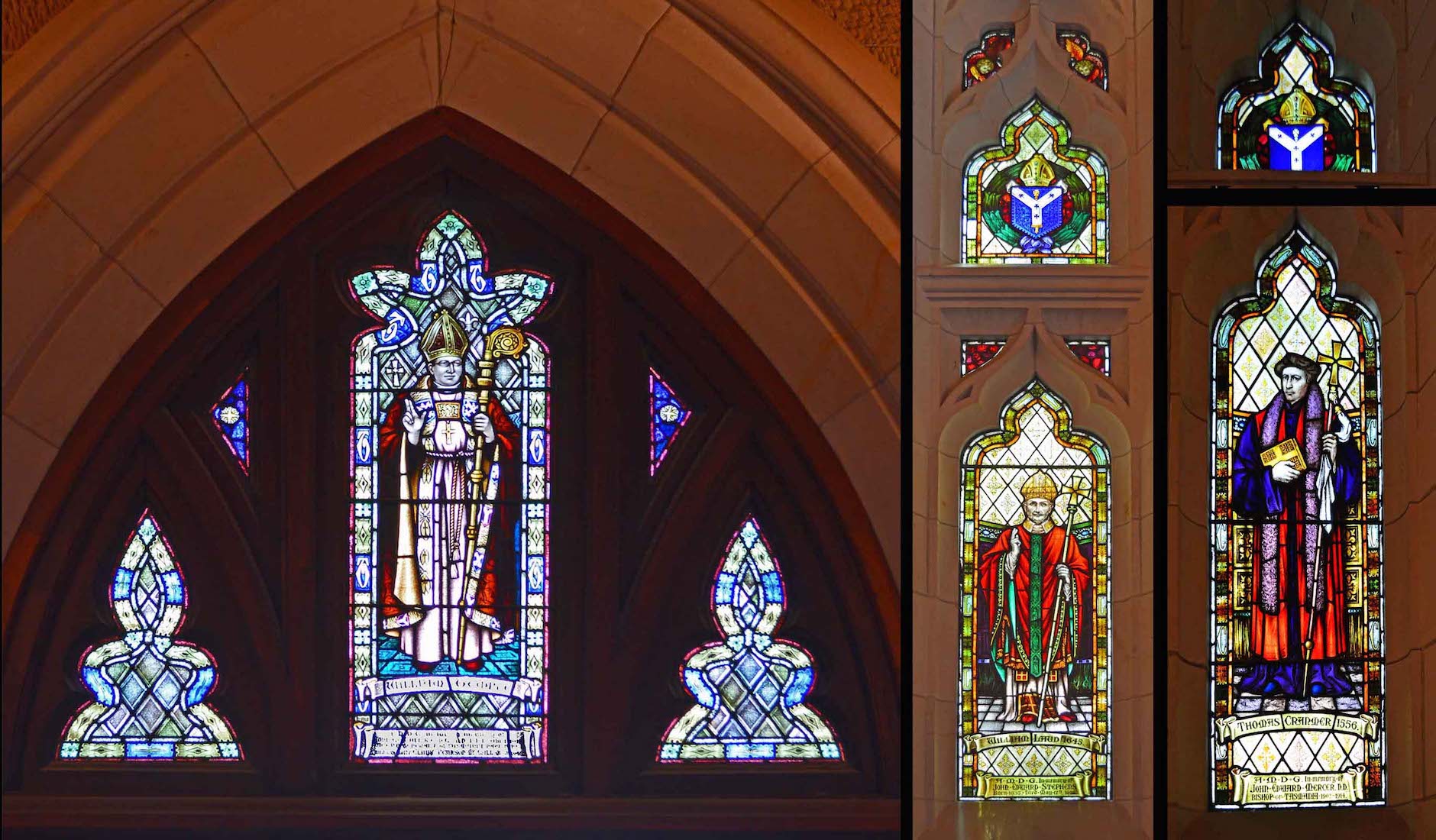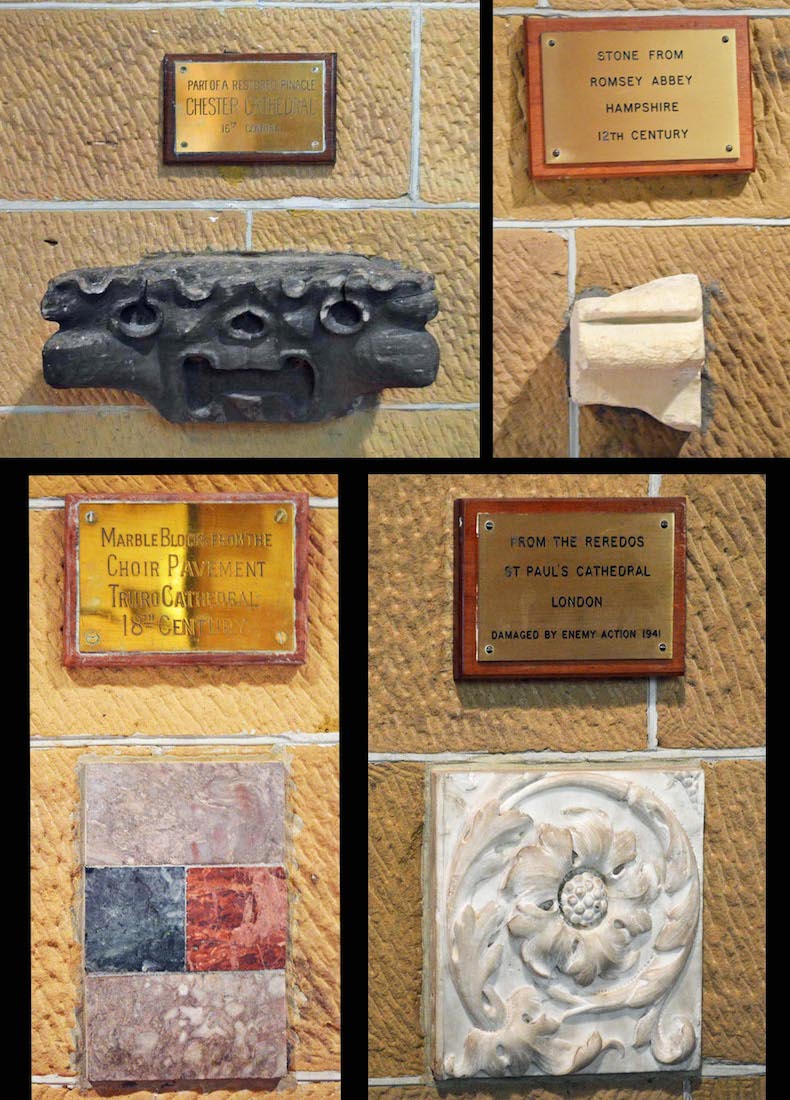
In our tour, we shall first complete our inspection of the transepts and nave. The parquet flooring captures our attention wherever we look! But now we turn to the South transept. Just beyond the pulpit is the entrance to the Nixon Chapel, but just beyond that is a small door leading to the mystery round tower ... . PLAN
42. SOUTH TRANSEPT WINDOWS
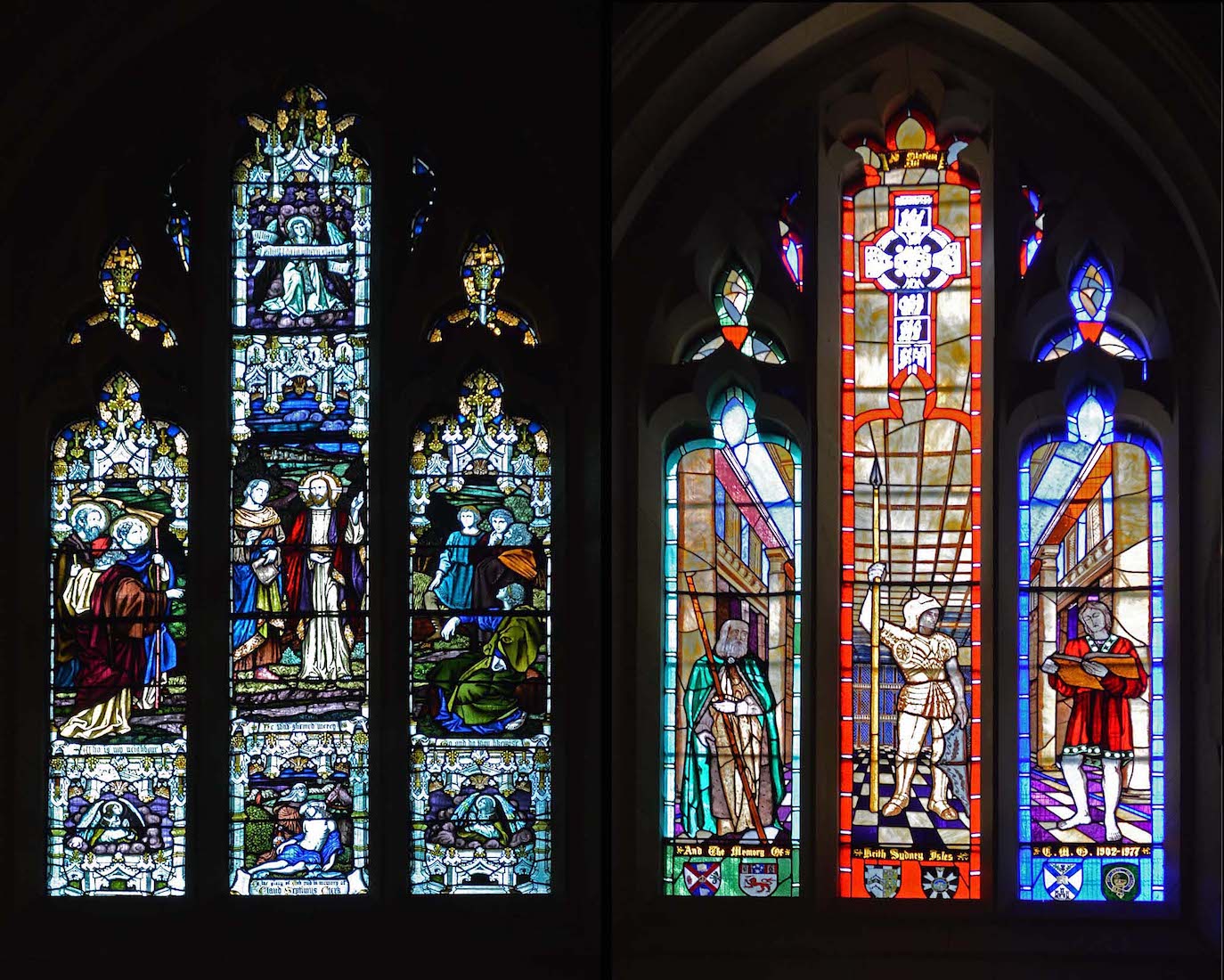
The left window of the South transept shows Jesus teaching about ‘who is my neighbour’, based on the parable of the Good Samaritan. The window at right was dedicated in 1980 in memory of Prof Kevin Sydney. There is a Celtic cross at the top, and the three figures are St Patrick, St Andrew and St George – patron saints of the universities where Sydney worked.
43. WAR MEMORIALS
The South transept is a memorial to all those who died in the two World Wars. Particularly significant is the brass plate in memory of Australia’s last ANZAC, Private Eric Campbell, who enlisted in 1915 at age 16, and died in 2003 at 103. His funeral took place in the Cathedral.
44. NAVE SOUTH WALL
The pattern of the North wall is repeated here: stained glass windows alternating with wall plaques, and also memorial plaques on the sills.
45. NAVE SOUTH WINDOWS
There are 75 stained glass windows in St David’s, many made by the fine English craft firm of Burlison and Grills, London. The window at left shows St David, St Augustine and St Gregory. The window at right depicts St Stephen, St Alban and St Laurence. St Alban was the first English martyr, and legend has it that St Laurence died by being roasted on a griddle.
46. MEMORIAL PLAQUES
The two long window plaques are in memory of Bishop Francis Russell Nixon, first Bishop of Tasmania, and of his wife Anna Maria. The top plaque at right remembers an early Attorney-General, Alfred Dobson.
47. CHOIR PRACTICE
We were lucky enough to hear the Choir singing the Sunday Choral Eucharist. Against the South wall behind, we have the baptismal font just out of sight at left, with a ceramic fresco above it, the doorway through to the tower link, and another of the stained glass windows.
48. BAPTISMAL FONT
The font was worked by a local craftsman to Bodley’s design. In Anglican tradition, baptism is the rite by which children (and older worshippers) enter into the body of the Church.
49. FRESCO
On the wall above the font is mounted a fine Royal Doulton ceramic fresco depicting the finding of the baby Moses in the bullrushes. It was presented in 1930 by L. J. E. Hooper Esq., who was Managing Director of Doultons Ltd. It was designed by the English artist Tinwell, and given in 1929 by Mr A. Harris.
50. SOUTHWEST CORNER
We have almost completed our circuit of the Cathedral nave, arriving now at the Southwest corner.
51. WINDOWS
The window at left is the end window of the South wall of the nave, and shows St Anne, St Mary Magdalene, and St Helena – the mother of Constantine. The window on the West wall shows some lesser known saints: St Hilary, St Martin and St Brice. Note the demon at the feet of St Brice!
52. BANNER AND CREST
Also hanging in the South West corner is an attractive Mothers’ Union banner, and on the front West door an etched St David’s crest.
53. GREAT WEST WINDOW
This nativity window is modern ‘leadlight’ and not stained glass. Among its many features, note the exquisite baby Jesus, the character of the kings and shepherds, and the energy as the light fills the Cathedral. The window, entitled ‘The Nativity’ was installed in 1965, and came from the studio of Brooks Robinson in Melbourne.
54. DECORATIVE CRESTS
Just before we leave the nave, we notice the two crests hanging atop the front columns – crests of the Tasmanian Diocese and St David’s. There are two further crests in the front clerestory windows, installed in 2009 – crests of two Anglican schools: Hutchins Boys’ School (left) and St Michael’s (Girls) Collegiate (right). Apart from these, the windows are otherwise plain. Much of the clerestory glass is original.
56. CLOISTER WEST WINDOWS
From left to right, the windows show John Wycliffe, William Tyndale, the Venerable Bede, St Boniface, St Augustine, St Aidan, St Alban and St Columba. Each window has an ‘in memoriam’ panel at the bottom.
57. PAST CLERGY
A little more difficult to see are panels with portraits of past clergy associated with St David’s.
58. TOWER ROOM WINDOWS
The ground level Tower Room contains a small kitchen and public conveniences. There are also these three windows: above the South door, Bishop William Cowper, and in the kitchen area, Bishop William Laud and Thomas Cranmer. Laud was Archbishop of Canterbury 1633 – 1645; Cranmer was leader of the English Reformation and also Archbishop of Canterbury.
59. PLAQUES
St David’s is the sole Anglican Cathedral in Tasmania. The board at left lists the Assistant Bishops of the Diocese of Tasmania. The two plaques at right relate to the installation of the bells in the Cathedral.
60. STONES
Cathedrals have a quaint practice of accumulating pieces of stone from other important buildings. St David’s has a superb collection, but unfortunately much of it is hidden by shop fittings.


